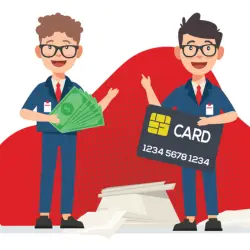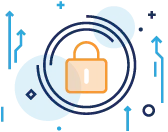TABLE OF CONTENTS
- What is a BIN Attack?
- What is Credit Card Testing?
- What’s the Difference Between a BIN Attack and Card Testing Fraud?
- How BIN Attacks and Card Testing Fraud Can Harm Your Business
- How Can You Detect a BIN Attack?
- How Can You Protect Your Business from a BIN Attack and Card Testing Fraud?
- What to Do in the Event of a BIN Attack
- Final Thoughts
BIN attacks and credit card testing are two common ways fraudsters exploit people’s card information. As e-commerce grows in popularity, this method of BIN scamming also grows as a frequent form of theft. That said, it’s important to learn how to identify and avoid such attacks, thus protecting your sensitive credit card information. Of particular importance for business owners is credit card testing, through which your business could unintentionally assist a scammer. This piece explains the terms BIN attack and credit card testing, their potential impact on your business, possible defense solutions, and more.
What is a BIN Attack?
A bank identification number (BIN) is the first six or four numbers of a credit card number. These numbers identify the issuing bank and card network. The rest of the card’s numbers are computer-generated and unique to every cardholder. At the end of every account number, there’s a “check digit” used for error detection. A BIN attack refers to a style of BIN scamming in which a fraudster takes the first six numbers and runs software to generate the rest of the numbers. After the fraudster identifies a full account number, they’ll test it via credit card testing.

What is Credit Card Testing?
Testing a credit card is the practice of making small online purchases to assess whether the card number is valid. This practice also tests whether there’s any credit card fraud detection protection. Upon successful credit card testing, the fraudster will then extract as much money as possible, making larger purchases until there’s nothing left or protection detects the fraud. The other route commonly taken after successful credit card testing is the selling of your information on the dark web.
What’s the Difference Between a BIN Attack and Card Testing Fraud?
A BIN attack and card testing fraud are different, yet closely related in the art of BIN scamming. The former targets the BIN of your account number. Its primary purpose is to “crack” your credit card information with software. Card testing, on the other hand, typically follows the attack. In this process, small online purchases verify whether your card is active and is protected against fraud.
How BIN Attacks and Card Testing Fraud Can Harm Your Business
Credit card fraud can have a major impact on your business. The surge in testing transactions may generate a substantial amount of interchange fees. Furthermore, you may have to pay for disputes and dispute fees emerging due to the additional interchange fees. Another consideration is account suspension. You could lose access to your merchant account if your bank concludes that the attack is due to the high-risk nature of your business management.
How Can You Detect a BIN Attack?
Here are a few indications that you are being BIN attacked or credit card tested:
- Small transactions – Alerts that small, repeated transactions are being made from the same IP address are a sign of fraud.
- Many purchases in a short period of time – Programmed bots and software tend to make as many purchases as possible once the credit card has been cracked. Watch out for such circumstances.
- A high rate of credit card authorization errors – This shows that the fraudster is trying to access sensitive information over and over again.
- Card Verification Value (CVV) errors – Since the stolen information doesn’t include the CVV, fraudsters have no way of knowing it. Therefore, errors in CVV are a frequent sign of card testing.
- Time of purchase out of the ordinary – If there are purchases made outside of normal business, your business may be being used to test credit cards.
How Can You Protect Your Business from a BIN Attack and Card Testing Fraud?
Protecting your business from frauds, such as BIN attacks and card tests, is crucial. You can do so by putting into place safeguards, such as card limits, blocked access after a set number of declined transactions, and the implementation of CAPTCHA for online transactions. CAPTCHA secures the payment page from bots.
Identify fraud chargebacks

A rapid increase in chargebacks can put your merchant account at risk. Through using chargeback analytics, gateway settings, and other anti-fraud tools, you can identify and avoid credit card testing scams. There are also companies specializing in chargeback management if your internal solutions fail.
Utilize tools to prevent credit card testing
To deal with card testing and other forms of e-commerce fraud, a PCI-compliant payment gateway is the first step you should take. The system should include AVS and CVV matching, as well as up-to-date fraud screening solutions. Anti-fraud protocols such as 3-D Secure can also help fight card tests.
What to Do in the Event of a BIN Attack
In the case of a BIN attack or other credit card frauds, the first thing to do is to contact your gateway provider or merchant bank. They will tell you what to do next. It’s also strongly advisable for you to report the incident to the appropriate authorities. This includes filing a report to the police or other online safety organizations.
Final Thoughts
BIN scamming through BIN attacks and credit card testing can happen to just about anyone. The first step of protecting yourself is to understand what these terms mean. Next comes detecting, preventing, and protecting your sensitive information from fraud by following the advice and solutions offered here. In the event of BIN attacks, it’s also necessary to contact authorities to prevent this fraud before it starts advancing.






